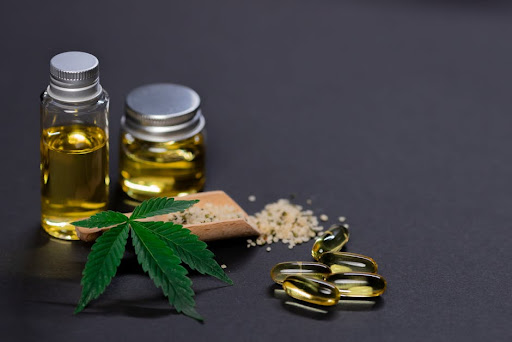The subject of cannabinoids can get a little confusing for newcomers, and that’s putting it mildly.
There are over 100 unique cannabinoids as of right now. That number gets larger when you count the various herbal and synthetic cannabinoids.
But there are a few basic truths that you might find helpful. If you’re ready to start, here’s a guide to some of the most prevalent cannabinoids and the different types of cannabinoids today.
Let’s explore!
Table of Contents
ToggleCannabidiol (CBD)
Cannabidiol (CBD) is a phytocannabinoid discovered in 1940. It is one of 100 identified cannabinoids in cannabis plants and accounts for up to 40% of the plant’s extract.
Clinical research on cannabidiol included studies of anxiety, cognition, movement disorders, and pain. CBD is typically extracted from the hemp plant’s leaves, flowers, and stalks.
Tetrahydrocannabinol (THC)
Tetrahydrocannabinol, also known as THC, is a psychoactive chemical found in the cannabis plant. THC is the main ingredient in marijuana and is responsible for the plant’s mind-altering effects.
Most people also use THC-Free Crystal Resistant Distillate, a highly refined, proprietary distillate containing the broad spectrum of cannabinoids that the market is increasingly demanding.
Generally, THC also has medical applications and is used to treat various conditions, including pain, nausea, and wasting syndrome in people with HIV/AIDS.
Cannabigerol (CBG)
Cannabigerol CBG is a non-psychoactive cannabinoid found in the hemp plant. CBG works to fight inflammation, pain, and anxiety. CBG is also being studied for its potential to treat several other conditions, including cancer.
Cannabichromene (CBC)
CBC is one of the types of CBD found in cannabis. It is similar to THC in that it has a psychoactive effect but is different in that it does not produce the “high” associated with THC.
It has been shown to have anti-inflammatory, anti-anxiety, and anti-depressant effects. It is also thought to improve cognitive function.
Cannabinol (CBN)
Cannabinol (CBN) is a cannabinoid known for its sedative effects. Unlike most other cannabinoids, CBN is not found in significant amounts in fresh cannabis flowers.
Instead, it is produced as cannabis ages and is often exposed to oxygen and light. For this reason, CBN is sometimes referred to as “the sleep cannabinoid.”
In addition to its sedative effects, CBN is also known to be an analgesic (painkiller), anticonvulsant, and antibacterial.
Pros and Cons of Using Cannabinoids
Cannabinoids are a class of drugs that includes natural and synthetic substances. They are typically used for medical purposes but can also be usually used recreationally.
There are pros and cons to using cannabinoids. Some of the pros include relief from pain, nausea, and anxiety. They can also increase appetite and reduce inflammation.
The cons of using cannabinoids include dizziness, paranoia, and anxiety. Some research has also shown that they can cause long-term cognitive impairment. So, it is very important to use it moderately.
All About Knowing Different Types of Cannabinoids Today
Overall, cannabinoids are beneficial compounds that offer a wide range of potential medical applications. However, it is essential to remember that not all types of cannabinoids are created equal.
Some, like CBD, are non-psychoactive and have shown promising therapeutic potential. Others, like THC, are responsible for the psychoactive effects of cannabis.
It is important to research the specific effects of each cannabinoid before using them for therapeutic purposes. With some effort, you can ensure that you are getting what’s best for you!
Did you find this article helpful? Check out the rest of our blogs!
Also Read About: Start an Edible Cannabis Business











